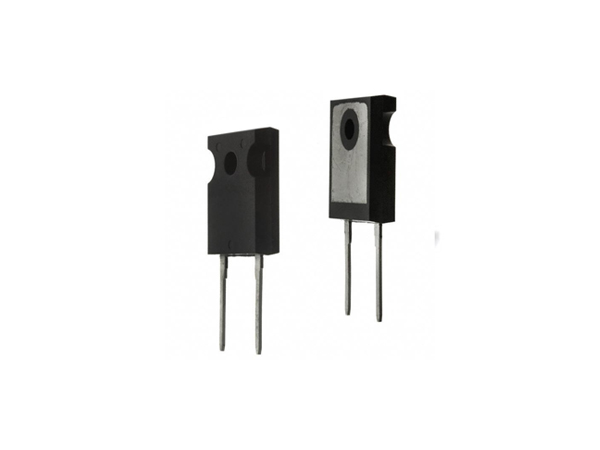Insulated Gate Bipolar Transistors (IGBTs) have become increasingly popular in various applications due to their unique characteristics and features. They have emerged as the go-to choice for many power electronics engineers, driving innovations in various industries. In this article, we'll demystify IGBTs, explore their working principles, discuss their pros and cons, highlight main parameters, provide guidance on selecting the right type, and delve into the wide range of applications where IGBTs shine.
1. What is an IGBT?
IGBTs are a hybrid semiconductor device that combines the advantages of both Metal-Oxide-Semiconductor Field-Effect Transistors (MOSFETs) and Bipolar Junction Transistors (BJTs). An IGBT offers high input impedance and fast switching speeds similar to a MOSFET, while also providing low saturation voltage and high current-carrying capabilities like a BJT. This unique combination makes IGBTs ideal for applications requiring high voltage, high current, and efficient switching performance.

2. Working Principle of IGBTs:
The basic structure of an IGBT consists of four alternating layers of P-type and N-type semiconductor materials, forming a PNP (positive-negative-positive) and an NPN (negative-positive-negative) transistor. In an IGBT, a MOSFET controls the BJT by modulating its base current. The gate terminal (insulated) of the MOSFET receives an external voltage signal, which turns the IGBT on or off.
When a positive voltage is applied to the gate terminal, the MOSFET turns on, injecting current into the base of the NPN transistor. This causes the BJT to turn on, and a continuous current path is established between the collector and the emitter of the IGBT. Conversely, when the gate voltage is removed or reduced below a specific threshold, the MOSFET and the BJT turn off, stopping current flow.
3. Advantages and Disadvantages of IGBTs:
Advantages:
- High input impedance resulting in minimal driving power requirements.
- Fast switching speeds, improving overall system efficiency.
- Low saturation voltage, reducing power losses during conduction.
- High current-carrying capabilities, suitable for high-power applications.
- Excellent performance at high voltages, making it ideal for medium-to-high voltage applications.
Disadvantages:
- Higher switching losses compared to MOSFETs, especially at high frequencies.
- Limited short-circuit withstand time, requiring additional protection measures.
- Slower turn-off speed compared to turn-on speed, which may increase switching losses.
4. Main Parameters of IGBTs:
Several parameters need to be considered while selecting IGBTs for your application:
- Collector-emitter breakdown voltage (Vce): The maximum voltage the IGBT can block. Choose a device with a higher voltage rating than your application's requirements.
- Collector current (Ic): The maximum continuous and pulsed current the IGBT can handle; must be higher than the required current in the circuit.
- Gate threshold voltage (Vge): The minimum voltage required at the gate terminal to turn the IGBT on. Select a device with a compatible gate drive circuit.
- On-state voltage drop (Vce(sat)): The voltage drop across the IGBT during conduction. Lower values lead to reduced power losses.
- Switching frequency: The frequency at which the IGBT can operate efficiently. Consider the losses and thermal limitations of the device at the desired switching frequency.
5. How to Select the Right IGBT Type:
When selecting IGBTs, consider the following factors:
- Calculate the voltage and current requirements of your application.
- Identify the desired switching frequency range.
- Evaluate power and thermal management considerations.
- Choose gate drivers that can provide the required gate voltage.
- Consider additional parameters like diode characteristics and short-circuit withstand time.
6. Applications of IGBTs:
IGBTs are widely used in various applications, including:
- Motor drives: IGBTs excel in controlling and driving electric motors for applications such as electric vehicles, air-conditioning systems, and industrial equipment.
- Power supplies: IGBTs are used in switch-mode power supplies, converters, and inverters for efficient voltage regulation and power conversion.
- Renewable energy: Solar inverters and wind power converters benefit from the high voltage and current capabilities of IGBTs.
- Rail transportation: IGBTs are employed in propulsion systems of electric trains, providing efficient power conversion and control.
Conclusion:
IGBTs have become a reliable and efficient choice for various power electronics applications. Understanding their working principle, advantages, disadvantages, and main parameters helps engineers make informed decisions when selecting and implementing IGBTs. With the right choice, IGBTs can significantly improve the performance and efficiency of your power electronics systems.
Related articles:
Identifying the Positive and Negative Poles of Zener Diodes: A Guide for Electronics Enthusiasts
Related product recommendation
- Transistors - Bipolar (BJT) - Single
- Transistors - Bipolar (BJT) - Single, Pre-Biased
- Transistors - FETs, MOSFETs - Arrays
- Transistors - FETs, MOSFETs - RF
- Transistors - FETs, MOSFETs - Single
- Transistors - IGBTs - Modules
- Transistors - IGBTs - Single
- Transistors - JFETs

